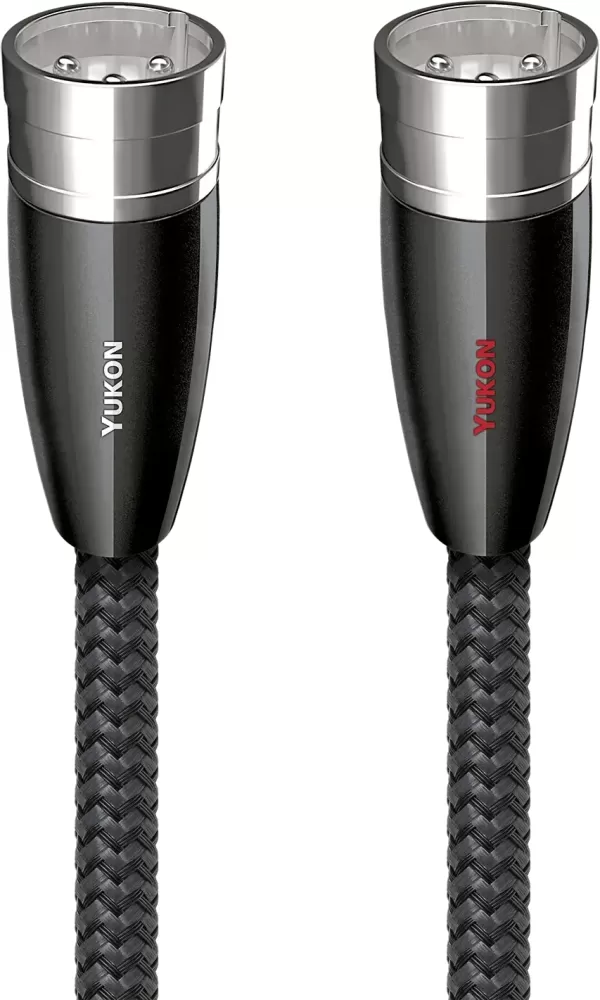AUDIOQUEST Yukon XLR Cables
The AudioQuest Yukon XLR analog-audio cable connects audio source components to amplifiers and receivers, offering exceptional performance with Solid Perfect-Surface Copper+ (PSC+) conductors, Polyethylene Air-Tube insulation, and Carbon Mesh-Network Noise-Dissipation for clear, dynamic sound.
The AudioQuest Yukon XLR analog-audio cable is designed to deliver remarkable sound clarity and reduce distortion. Featuring Solid Perfect-Surface Copper+ (PSC+) conductors, it minimizes electrical interference, while Polyethylene Air-Tube insulation ensures optimal geometry and dynamic contrasts. Carbon Mesh-Network Noise-Dissipation technology effectively dissipates high-frequency noise, resulting in cleaner, more natural audio performance.
Solid Perfect-Surface Copper+ (PSC+) Conductors
Solid conductors eliminate electrical and magnetic strand interactions, significantly reducing distortion. PSC+ Solid-Copper minimizes distortion caused by grain boundaries and enhances linear RF Noise-Dissipation, ensuring a clearer and more accurate audio signal.
Carbon-Based 3-Layer Noise-Dissipation
Achieving full shield coverage is easy, but preventing captured Radio Frequency Interference (RFI) from distorting the equipment's ground reference is crucial. AudioQuest's Noise-Dissipation System (NDS) addresses this by using alternating layers of metal and carbon-loaded synthetics to "shield the shield." This technology absorbs and reflects the majority of noise/RF energy before it reaches the ground layer, ensuring that high-frequency interference does not modulate or distort the signal.
Direction-Controlled Conductors
Every drawn metal strand or conductor has a non-symmetrical, directional grain structure. AudioQuest harnesses this natural characteristic by controlling RF impedance variation to ensure noise is drained away from areas where it could cause distortion. The optimal direction is determined by listening to each batch of metal conductors, with arrows marked on connectors to guide the correct alignment. For most AQ cables, these arrows not only enhance metal-directionality for Noise-Dissipation, but also optimize shield and ground attachment, ensuring superior system performance. This technique is a key element of AudioQuest's Noise-Dissipation technology, ensuring that induced noise is properly dissipated and drained.
Polyethylene Air-Tube Insulation
Solid materials adjacent to a conductor contribute to an imperfect circuit, as they absorb and release energy, often causing distortion. AudioQuest uses Polyethylene Air-Tube Insulation for both conductors, which enhances geometry stabilization and clarity. With air's minimal energy absorption and Polyethylene's low-loss properties, this insulation provides a more accurate signal. The high air content reduces the distortion typically caused by other insulation materials, resulting in improved focus and overall sound quality.
Triple-Balanced Geometry
AudioQuest's Triple-Balanced Geometry features a separate ground-reference conductor, ensuring the cable's shield is never used as an inferior conductor. With three conductors, whether in RCA or XLR configurations, the positive and negative signals are delivered through equally high-quality, low-distortion pathways. This balanced design minimizes signal interference and distortion, delivering clear and accurate sound reproduction.
Cold-Welded, Hanging-Silver Directly Over Pure Purple Copper Terminations
AudioQuest employs a unique cold-welding process to create its terminations, eliminating the need for solder, which can be a source of distortion. This method uses high pressure to form a secure connection, ensuring minimal signal interference. The terminations feature hanging-silver directly over pure purple copper, providing a superior connection with low distortion, which further enhances the overall sound quality of the cable.
|
|





Validate your login
Sign In
Create New Account